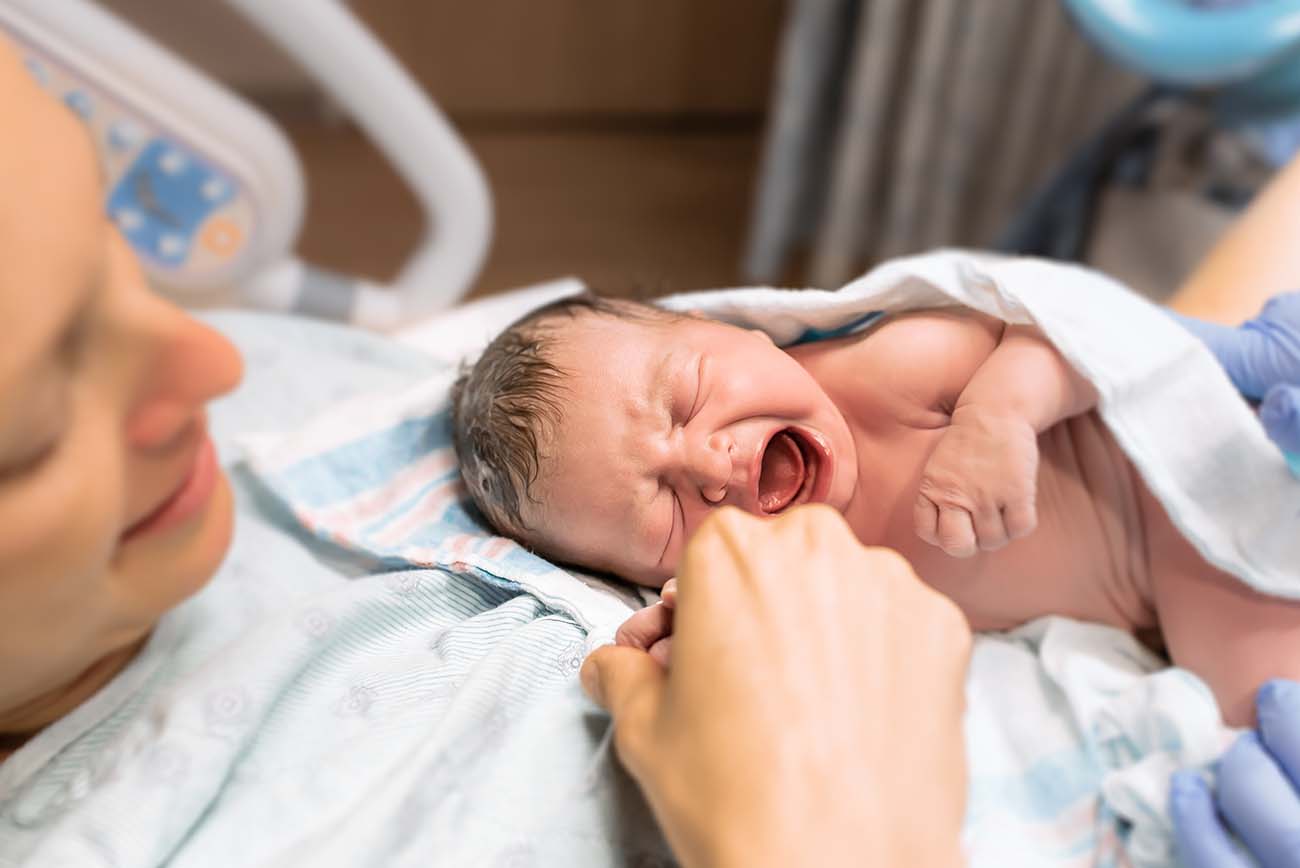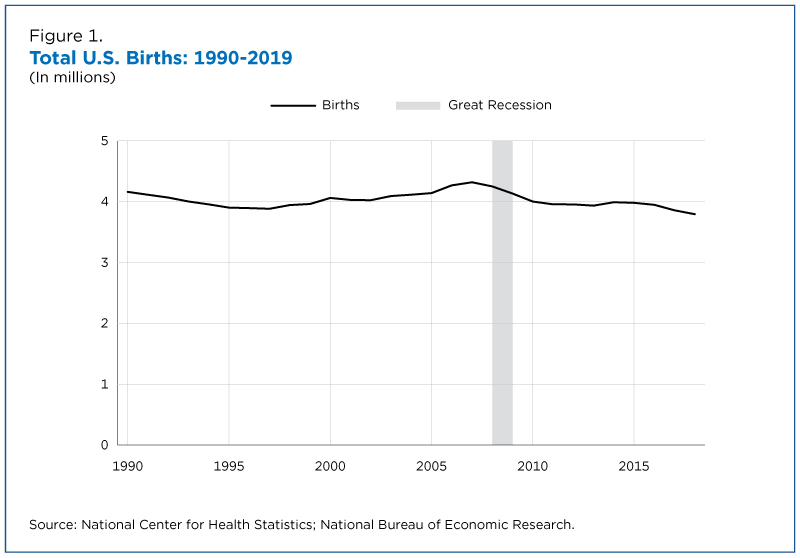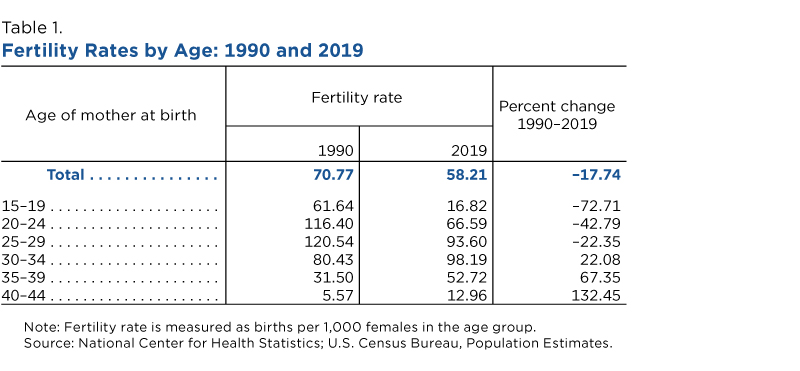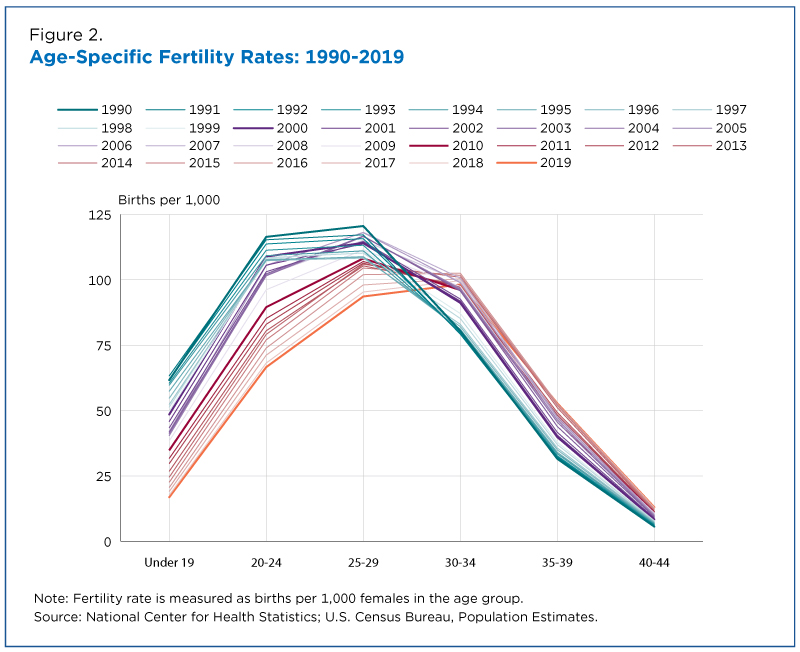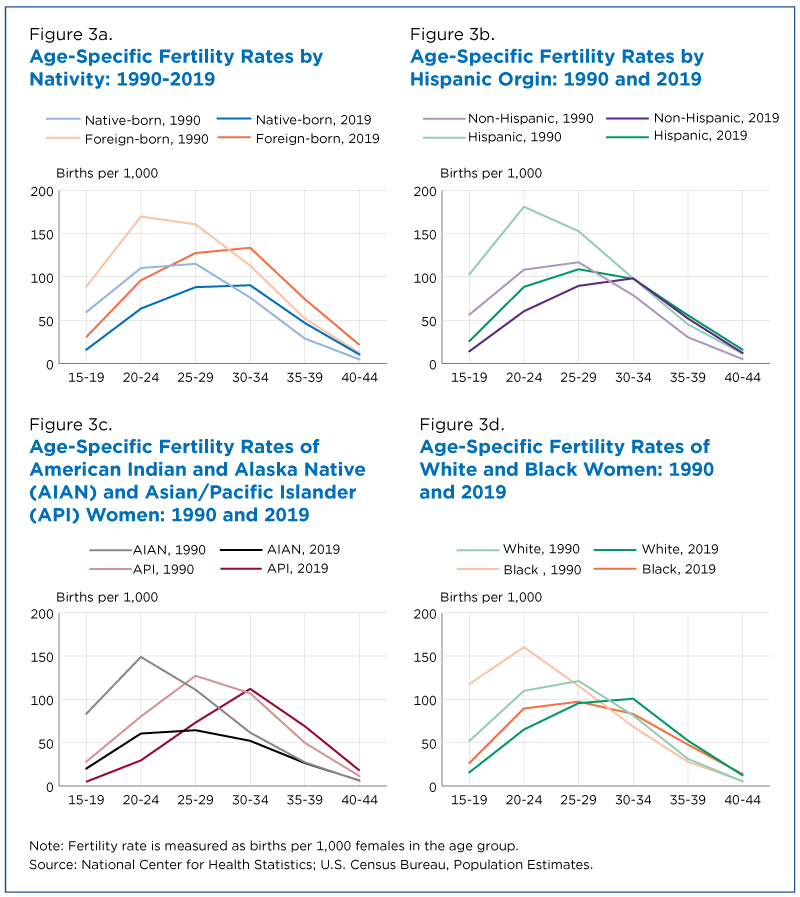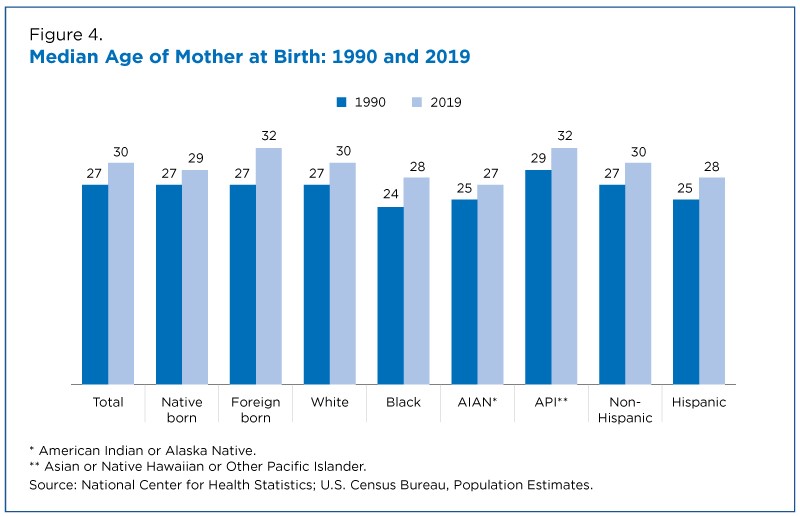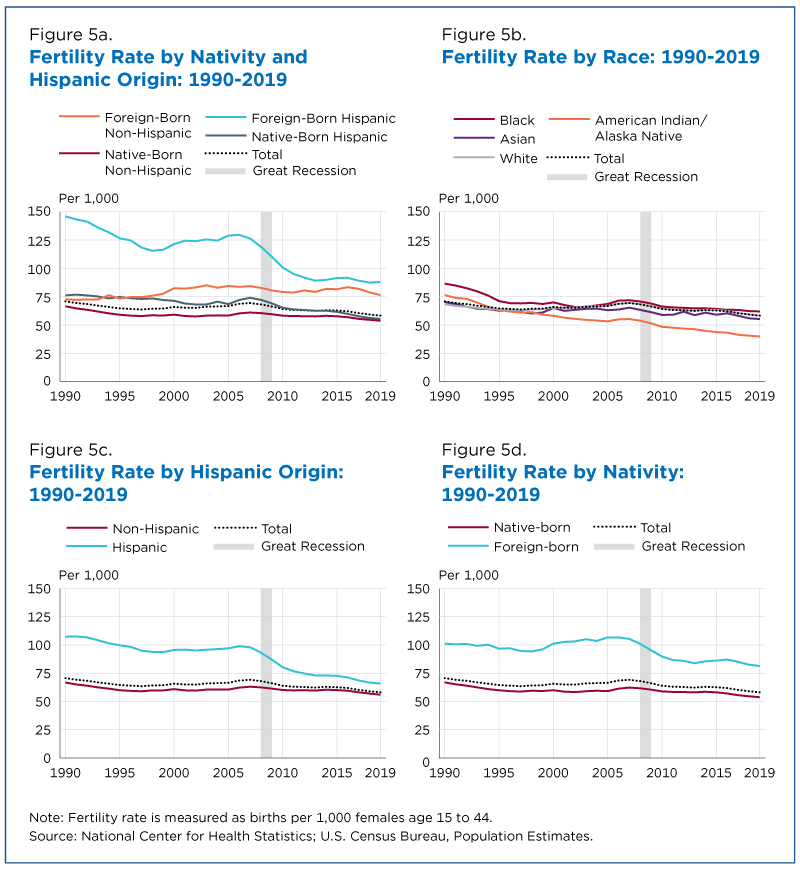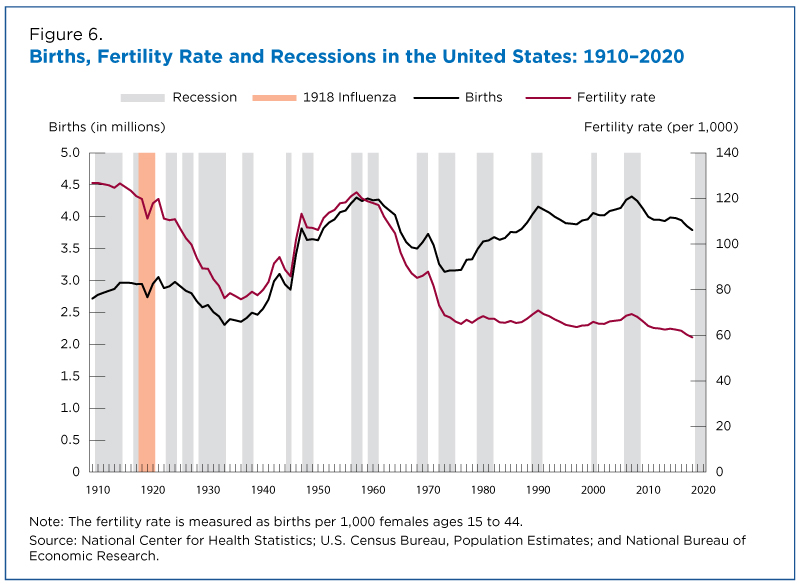Stable Fertility Rates 1990-2019 Mask Distinct Variations by Age
Overall fertility trends from 1990 to 2019 were relatively stable, compared to previous decades but varied significantly by age, according to a Census Bureau analysis.
The analysis, which looked at Census Bureau and National Center for Health Statistics data, shows fertility rates of women ages 20-24 declined by 43%, while those of women ages 35-39 increased by 67% during the roughly 30-year period.
While fertility rates broadly declined in the United States from 1990-2019, there was a mini baby boom in the early 2000s.
Together, the data paint a compelling picture of how the age at which American women give birth has changed over time.
Fertility Trends: 1990-2019
Fertility rates in the United States gradually declined from 1990 to 2019. In 1990, there were about 70.77 births each year for every 1,000 women ages 15-44. By 2019, there were about 58.21 births per 1,000 women in that age group.
While broadly stable, annual births in the United States declined from about 4.1 million to 3.7 million from 1990 to 2019 (Figure 1).
Shifting Age Structures
The gradual decline in overall fertility rates masks more variation by age.
Fertility rates of younger women fell substantially: There were 116.40 births for every 1,000 women ages 20-24 in 1990. In 2019, there were only 66.59 births to every 1,000 women in that age range — a 42.79% decline. This contributed to the overall decline.
During the same period, the fertility rates of older women rose significantly.
In 1990, there were 31.50 births for every 1,000 women ages 35-39. In 2019 there were 52.72 births for every 1,000 women ages 35-39 — a 67.35% increase. But overall fertility rates declined because the jump in birth rates of older women was not enough to offset declines in birth rates of younger women (See Table 1).
This pattern is not sensitive to the years we compare; Figure 2 shows that this is indeed a persistent trend from 1990-2019.
This general pattern also holds true for population sub-groups in the United States. Fertility rates increased at older ages, but not enough to make up for declines at younger ages.
These changing fertility rates by age shifted the median age at which women gave birth in the United States from age 27 in 1990 to age 30 in 2019.
The largest increase was among foreign-born and Black women, which rose from 27 to 32 years old and from 24 to 28 years old, respectively. The smallest increase in age (from 27 to 29 years old) was among women born in the United States.
Early 2000s Mini Birth Boom
While fertility rates broadly declined in the United States from 1990-2019, there was a mini baby boom in the early 2000s.
This increase was driven by foreign-born Hispanic women.
This mini baby boom to foreign-born Hispanics ended in 2007, just before the Great Recession began later that year. The Great Recession officially began in December 2007, ending in June 2009, according to the National Bureau of Economic Research.
It is not clear what portion of the fertility decline to foreign-born Hispanics can be attributed to the economic downturn since the decline began before the Great Recession started. This decline may partially be due to the end of the mini baby boom for foreign-born Hispanic women and a return to long-term downward fertility trend.
Historical Fertility Patterns
Despite the slight declines and mini-baby boom from 1990 to 2019, contemporary fertility trends are actually quite stable when viewed from a historical perspective.
During the 20th Century, there were several periods of substantial change: the precipitous decline in fertility at the beginning of the century, the baby boom of the 1950s, and the decline in fertility rates that began in the 1960s.
Within these overall changes, there were smaller, short-term fluctuations.
For example, during the broad fertility decline of the early 20th century, fertility dipped and increased following the 1918 influenza pandemic. During the 1950s baby boom, fertility stagnated in response to an economic recession in 1953.
Such changes were clearly short-term deviations within broader trends. A longer-term view can help differentiate between broad, generational changes and small year-to-year fluctuations.
These diverse patterns in fertility throughout the years highlight the variety of phenomena that may affect fertility — from generational changes to disease. They also provide an in-depth view of the changing face of fertility in America over time.
Related Statistics
Subscribe
Our email newsletter is sent out on the day we publish a story. Get an alert directly in your inbox to read, share and blog about our newest stories.
Contact our Public Information Office for media inquiries or interviews.
-
America Counts StoryU.S. Births Declined During the PandemicSeptember 21, 2021Several factors affect the birth rate but the pandemic did have an impact: births declined but began to rise again in March of this year.
-
America Counts StoryAre Women Really Opting Out of Work After They Have Babies?August 19, 2019More than 80% of highly educated women who had a baby in the last 12 months were in the labor force, compared to about half of women with a high school degree.
-
America Counts StoryCost of Motherhood on Women’s Employment and EarningsJune 16, 2020Labor force participation plummets when women have children, though earnings partially recover.
-
EmploymentThe Stories Behind Census Numbers in 2025December 22, 2025A year-end review of America Counts stories on everything from families and housing to business and income.
-
Families and Living ArrangementsMore First-Time Moms Live With an Unmarried PartnerDecember 16, 2025About a quarter of all first-time mothers were cohabiting at the time of childbirth in the early 2020s. College-educated moms were more likely to be married.
-
Business and EconomyState Governments Parlay Sports Betting Into Tax WindfallDecember 10, 2025Total state-level sports betting tax revenues has increased 382% since the third quarter of 2021, when data collection began.
-
EmploymentU.S. Workforce is Aging, Especially in Some FirmsDecember 02, 2025Firms in sectors like utilities and manufacturing and states like Maine are more likely to have a high share of workers over age 55.
